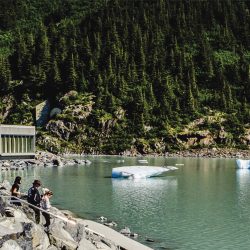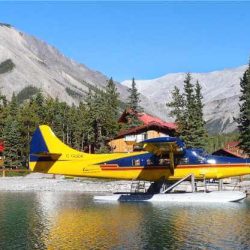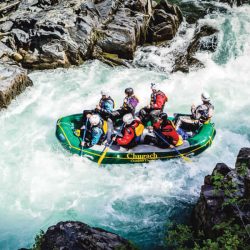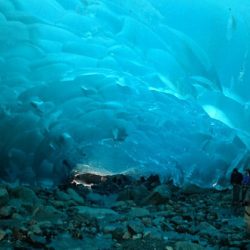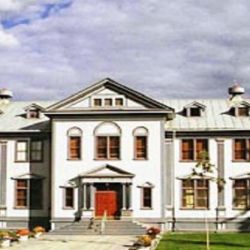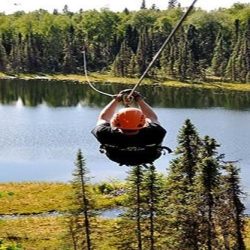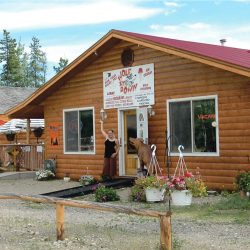Best Places to Stay in Sitka
Located near the harbor in the heart of downtown, offers comfortable lodging and fine dining in an environment designed to reflect local cultural influences.
Best Things to Do in Sitka
Sheldon Jackson Museum is the oldest museum in Alaska and the building itself is on the National Historical Register. Named for Rev. Dr. Sheldon Jackson, the driving force behind the construction of the museum as well as the collector of many of its artifacts. Summer visitors can observe Native Artisans taking part in the Museums’s residency program. These artist demonstrators link historic and contemporary Native culture for visitors.
On this exciting tour, you’ll have the opportunity to observe some of the area’s most famous residents: sea otters, humpback whales, puffins, bald eagles, or even brown bear, all in their natural habitat! Trace the rugged coast of pristine Sitka Sound or explore the narrow waterways that divide countless untouched islands and if conditions permit they will cruise to St. Lazaria, a world famous bird sanctuary. Let Allen Marine share the wild places around Sitka few have ever seen.
Sitka Walking Tours Take a guided tour through Sitka to see the Russian architecture, learn about the Tlíngit culture, and experience this quintessential Alaskan fishing town. Hike through the lush rainforest, along rugged coastlines, and up to panoramic mountain views. Sitka Walking Tours local guides are familiar with the terrain and wildlife. Sitka’s natural beauty and historical heritage makes this a magical place to explore.
Sheet’ka Tree Top Adventures Experience Sitka’s first aerial park. This thrilling course features 25+ rope and timber obstacles high in the magical Alaska forest. This unique adventure promises fun, challenging, and unforgettable memories, inspiring personal growth. Don’t miss this one-of-a-kind outdoor experience on Baranof Island!
Learn about the lives and histories of the people of Sitka: the Tlingits, Finns, Russians, and early American settlers of the 19th century. There are informative and attractive displays, a diorama of early Sitka and great photographs.
St. Michaels Cathedral originally completed in 1848, it was destroyed by fire and rebuilt in 1966. This Russian Orthodox Cathedral is home to a collection of art and rare church treasures. Listed on the National Register of Historic Places.
Exhibits portraying Alaska’s history, art and wildlife. New Archangel Dancers perform here. The Isabel Miller Museum run by the Sitka Historical Society in the Harrigan Centennial Hall houses Russian artifacts. The prize being a diorama depicting Sitka in 1867.
Sitka National Historical Park is small by Alaska standards at only 113 acres, but it packs in incredible history and outdoor exploration. The main draw to the park is the “Totem Park” with over 20 beautifully carved and historically significant Totems. The National Park Service offers a number of Ranger-led walks that explore the stunning natural history, the Russian & Tlingit battle of 1804 and the parks significant totem pole collection. The Visitor Center has exhibits showcasing traditional Tlingit life and shows a short 12 minute film “The Voices of Sitka.” The cultural center often has Tlingit artists working on projects and sharing their knowledge. Located in the heart of Downtown Sitka.
Sitka Summer Music Festival This annual event has been taking place in Sitka for over 50 years. Started in 1972, the annual music festival invites world class classical musicians for four weeks of events in June. In 2025, the festival events will run from June 3 – June 29. As many as 24 concerts and events take place in various locations around town, including evening concert events at Harrigan Centennial Hall.
Baranoff Castle State Historic Site known as “Castle Hill” is the center of Tlingit, Russian and United States history. Originally occupied by the Kiksadi clan of Tlingit natives, until the Russians took the area by force in 1804. It became the capital of Russian America before the purchase of Alaska by the Americans in 1867. It was named a National Historic Landmark in 1962.
Dining in Sitka
Subway® has RV friendly locations open for breakfast, lunch and dinner. Eat Fresh with a Footlong Sub and add chips and a drink for your adventure! Stop and fuel up at over 50 Subway® locations across the state, order online at www.Subway.com or on the Subway® APP.
Getting Around in Sitka
The Alaska Marine Highway provides year-round ferry transportation throughout Southeast Alaska. The ferries provide residents and visitors with an opportunity to experience the scenery, wildlife, and warm hospitality of a variety of ports between Bellingham, Washington and Southwest Alaska. Regularly scheduled ferries between Sitka and Juneau.
Avis Car Rental has locations all throughout the state of Alaska, including the Sitka Airport.
Sitka, Alaska FAQs
What is Sitka, Alaska, Famous for?
Sitka, Alaska, is renowned for its rich history, stunning natural beauty, and thriving cultural scene. As the former capital of Russian America, Sitka boasts a blend of Russian and Tlingit influences. The city is also famous for its picturesque setting, surrounded by mountains, forests, and the Pacific Ocean. It’s often referred to as the prettiest town in Alaska.
Does Sitka, Alaska, have 24 hours of daylight?
No, Sitka experiences just shy of 18 hours of daylight at the Summer Solstice on June 20. By the end of August, the number of daylight hours is down to 14.
How to get to Sitka, Alaska?
Sitka is accessible by air and sea. Visitors can fly directly to Sitka Rocky Gutierrez Airport from Juneau, Seattle and various locations around Southeast Alaska. The Alaska Marine Highway Ferry System also provides regular ferry service to Sitka.
If you’re looking to Book Ferry Travel to Alaska from Canada or Washington State, check out www.FerryTravel.com
What to do in Sitka, Alaska, in one day?
With only one day in Sitka, you can explore its historical sites, such as the Russian Bishop’s House and the Sitka National Historical Park. Enjoy a scenic hike, visit the Alaska Raptor Center, and take in the breathtaking scenery from Totem Square.
Can you fly to Sitka, Alaska?
Yes, Sitka has its own airport, Sitka Rocky Gutierrez Airport, served by several airlines, including Alaska Airlines and Alaska Seaplanes.





